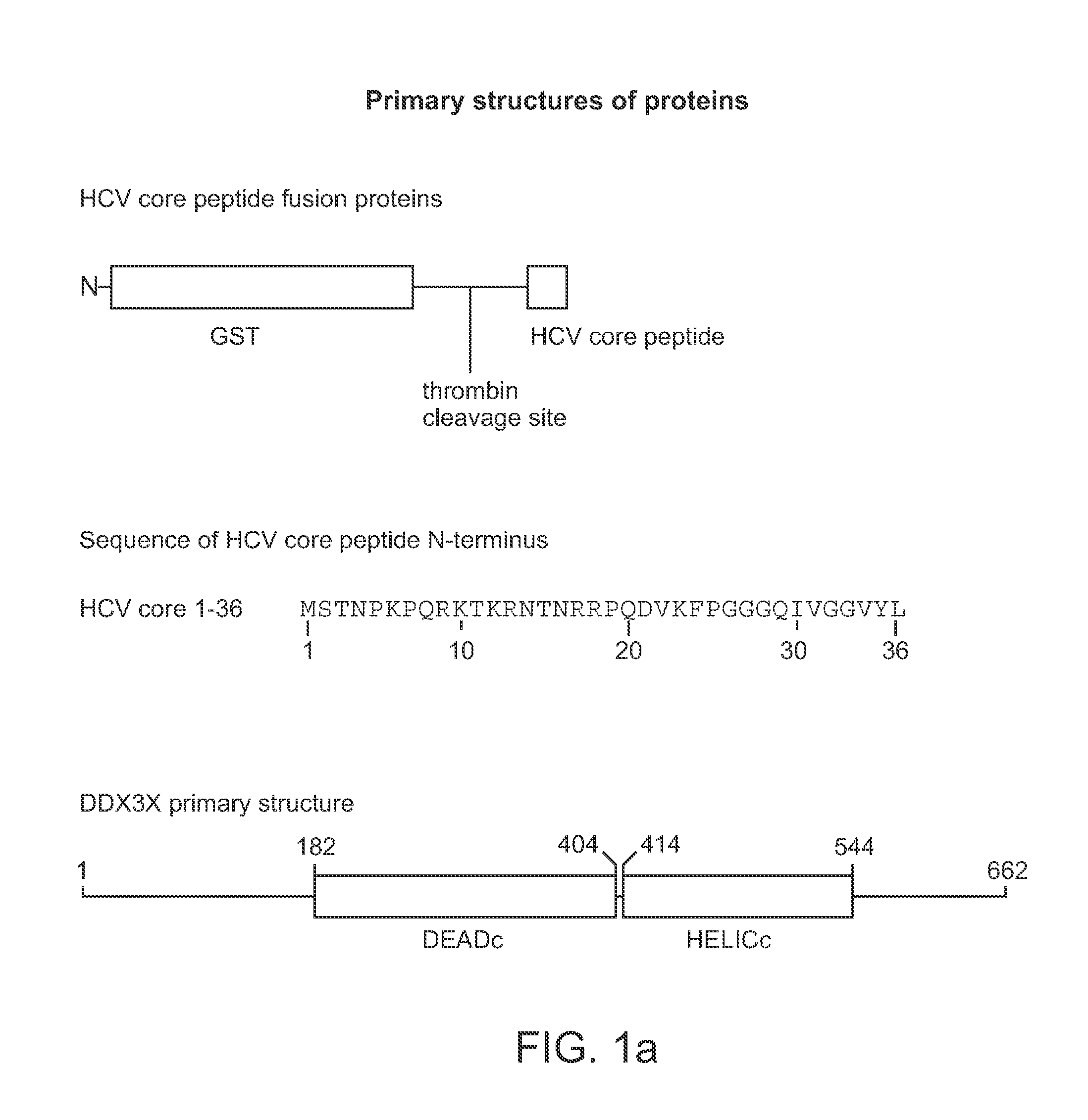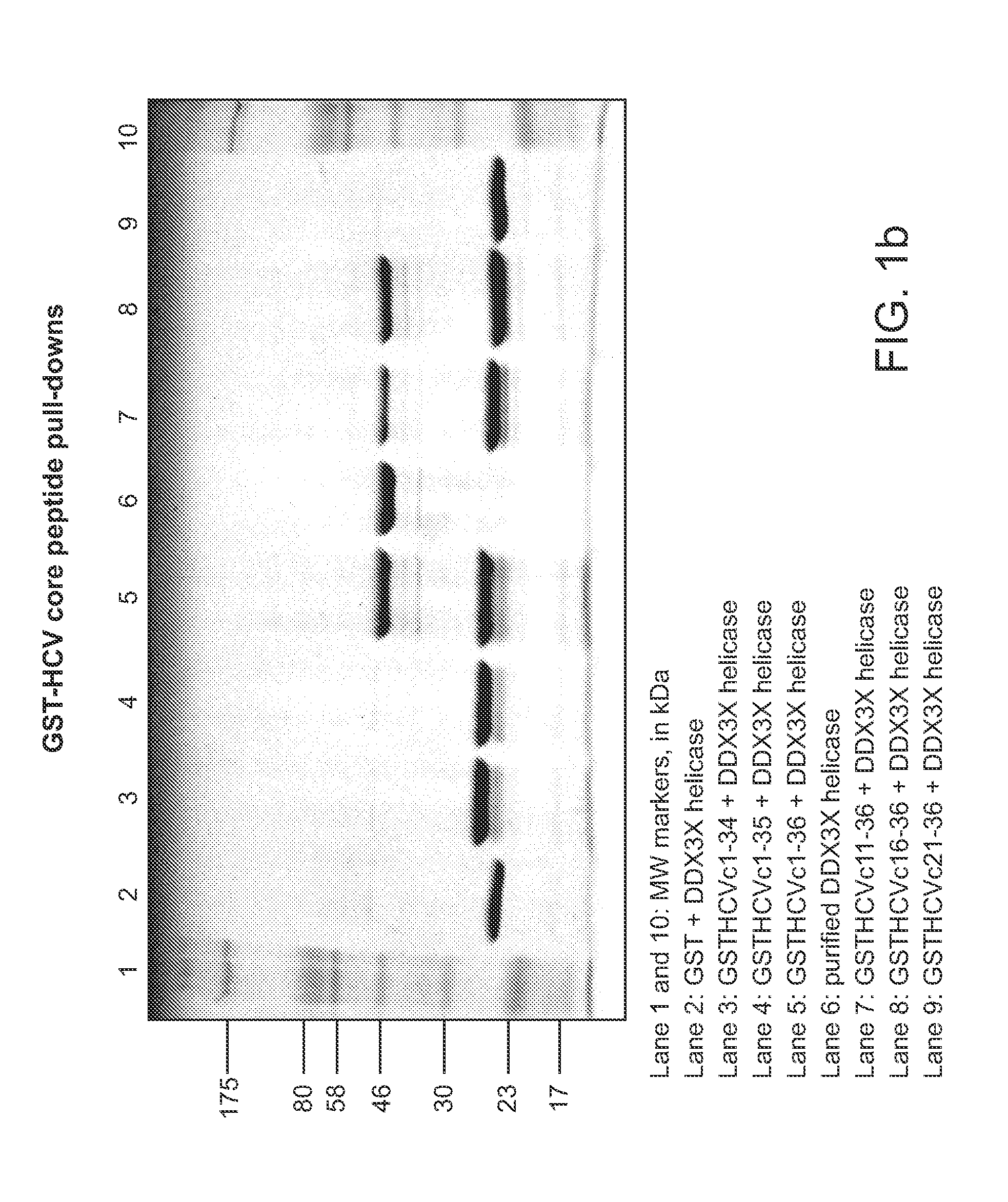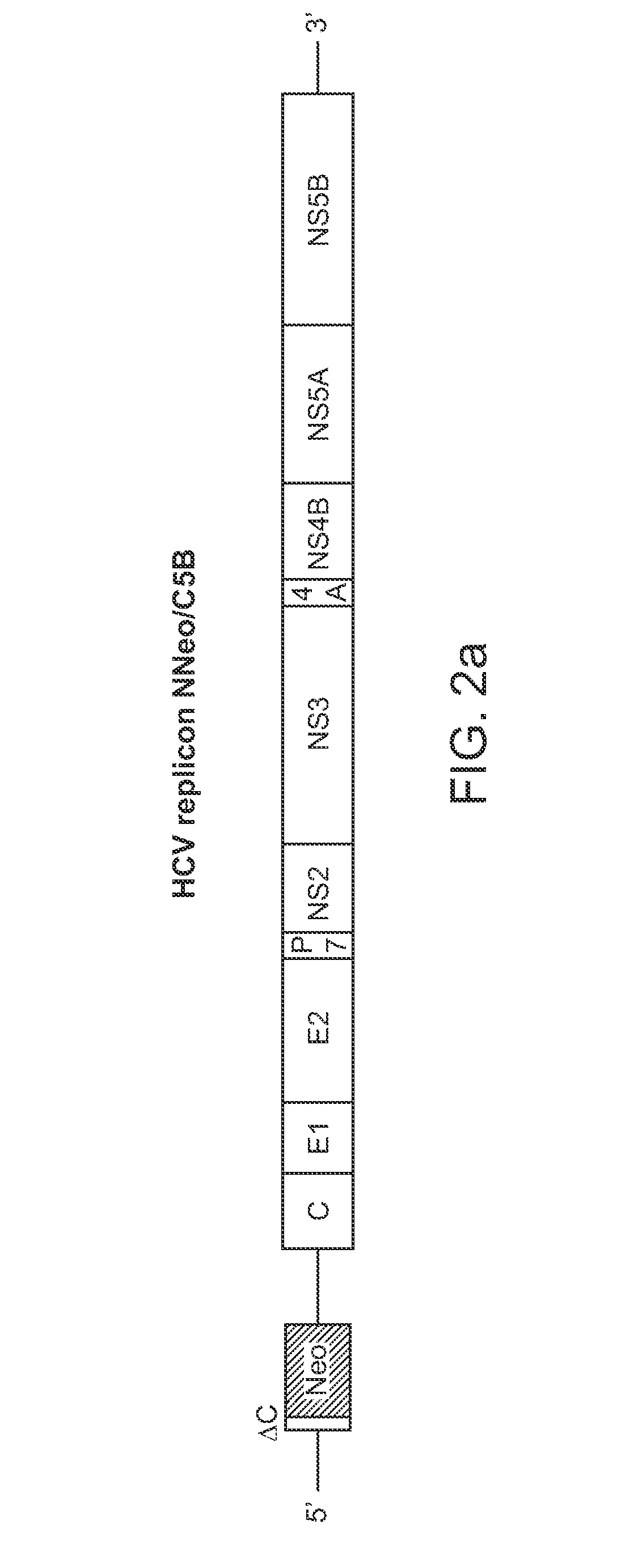Methods and Compositions for Inhibiting Hepatitis C Virus Replication
- Summary
- Abstract
- Description
- Claims
- Application Information
AI Technical Summary
Benefits of technology
Problems solved by technology
Method used
Image
Examples
example 1
Dominant Negative Inhibition of HCV Replication by Linking a Fragment of HCV Core Protein to the C-Terminus of GST
Methods and Materials
[0259]Plasmid construction. A PCR product encoding the cytoplasmic domain of HCV core protein (amino acids 1-123) was cloned into pGEX2T (Amersham Pharmacia Biotech) to construct pGEXHCVc123, which encodes GST fused in frame N-terminally to HCV core protein residues 1-123. The plasmids expressing related GST fusion proteins to the HCV core protein fragments were constructed by using Quikchange mutagenesis (Stratagene) of pGEXHCVc123 or related plasmids and are described in Table 1. The PCR product encoding the helicase domain of human protein DDX3X (DBX), amino acids 168-582 of DDX3X, was cloned into pET23a to construct pET23aDBX168-582. The generated vector encodes the DDX3X helicase domain with an N-terminal His6 tag. PCR products encoding N-terminal GST fusions in frame with HCV core protein residues 1-34 (GSTHCVc34) or 1-36 (GSTHCVc36) were clone...
example 2
High-Throughput Screen for Small Molecule Compounds that Disrupt the Interaction Between DDX3X and HCV Core Protein N-Terminal Residues 16-36
[0270]Fusion proteins of GST to HCV core protein fragments encompassing amino acid residues 16-36 bind tightly to the helicase domain of DDX3X, as described above. In contrast, fusion proteins of GST to fragments of HCV core protein lacking amino acid 36, or with mutations at either residue 34 or 35 do not bind to the DDX3X helicase domain. The tight clustering of amino acids in the N-terminal fragment of the HCV core protein, in residues 34-36, indicate that there is a “hot spot” for the binding interface between DDX3X and the HCV core protein that contributes a significant proportion of the binding energy (see Wells and McClendon (2007) Nature 450, 1001-1009).
[0271]A fluorescence polarization assay (Roehrl, 2004) may be used in a high-throughput screen for small molecules that disrupt or prevent the interaction between DDX3X and the HCV core ...
example 3
Design of Peptidomimetics that Disrupt the Interaction Between DDX3X and HCV Core Protein N-Terminal Residues 16-36
[0272]As noted in Example 2, three amino acids within the HCV core protein, residues 34-36, define a potential “hot spot” in the protein interaction surface with the DDX3X helicase domain. This small sequence can be used in the design of a cyclic peptide or peptidomimetic library to screen for inhibitors of the interaction between the HCV core protein and DDX3X. The synthesis of cyclic peptide libraries is a well-established methodology (de Vega, 2007). Cyclic peptides or peptidomimetics can be screened using the fluorescence polarization assay described in Example 2 above.
PUM
| Property | Measurement | Unit |
|---|---|---|
| Length | aaaaa | aaaaa |
| Solubility (mass) | aaaaa | aaaaa |
| Lipophilicity | aaaaa | aaaaa |
Abstract
Description
Claims
Application Information
 Login to View More
Login to View More - R&D
- Intellectual Property
- Life Sciences
- Materials
- Tech Scout
- Unparalleled Data Quality
- Higher Quality Content
- 60% Fewer Hallucinations
Browse by: Latest US Patents, China's latest patents, Technical Efficacy Thesaurus, Application Domain, Technology Topic, Popular Technical Reports.
© 2025 PatSnap. All rights reserved.Legal|Privacy policy|Modern Slavery Act Transparency Statement|Sitemap|About US| Contact US: help@patsnap.com



